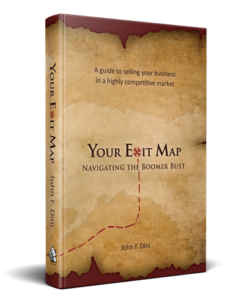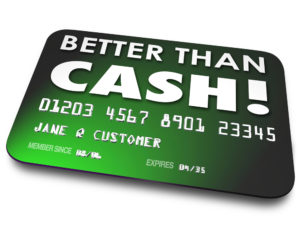 Several years ago, I did a cross-country trip with my family. We laid out a rough plan of what we wanted to see, how long it’d take, and most importantly, what we wanted to eat!
Several years ago, I did a cross-country trip with my family. We laid out a rough plan of what we wanted to see, how long it’d take, and most importantly, what we wanted to eat!
When we hit the road, I did not drive looking primarily in the rearview mirror, with an occasional glance at the gas gauge and the road signs. I looked ahead and tweaked the plan. Yet, that is often how business owners run their businesses. Often, this year’s business planning consists of, “let’s do what we did last year – just more of it.” We look at whether we have cash in the bank, check our financial statements, and compare how we fare against last year. Although this is a common practice we should run our businesses with an eye on the future.
No one has a crystal ball that provides perfect clarity on the future. A million factors and forces affect our business and most of them are not within our control. Forecasting and planning require looking ahead a taking our best (hopefully educated) guess on what the future holds. I want to convince you that a rough, hazy plan is better than no plan at all!
If you do not know where to start, here are some practical pointers.
MAKE THE PLAN
Every forecast needs to answer the following questions:
- Where am I? Assess your revenue, profitability, operations, market position and see how you are doing. What is working well and what isn’t?
- Where do I want to be in the future? Lookout 3 to 5 years and write down goals. How much revenue growth, how much net income growth, what improvements are necessary for the business?
- HOW do I get there? This is most critical. Identify actions/investments you could take/make to attain your goals. These might include:
- What is most important? Prioritize your improvements and plan them over 3 to 5 years. Tackle 2-3 goals per year.
- The end result should be:
• Establishing new markets
• Creating new products
• Adding key staff• Improving processes
• How much will my revenue grow in the next few years?
• What improvement do I need to make?• How much will my bottom line grow in the next few years?• Who do I need to hire/get on the bus? • How much will this cost?
WORK THE PLAN
Once the plan is created, establish a consistent review and adjust as needed. This may include:
- Review your monthly financial performance against the plan. Include revenue, cost of goods, overhead, net income, and other appropriate key metrics. This implies a monthly budget.
- Conduct a monthly review of strategic projects. Routinely assess whether you are making progress on your major goals. Are you ahead? On track? Behind? Dead-in-the-water?
- Adjust course. If you are not “on the plan,” why? What are the causes of the variance and what do you need to do to get back on track?
- Modify the plan as needed. The “crystal ball” is hazy and there is no perfect plan. As you adjust you will learn your capacity for change and identify ways to improve.
Start Now and Keep It Simple
In planning our road trip, we identified key sights to see along the way and saw most of them. We paced ourselves and enjoyed the trip. You may not know how to forecast, but you DO know your business! Trust your experience and make a “road trip” plan to identify the following, at a minimum:
- Revenue goals for next 5 years
- Net Income goals for the next 5 years
- New Critical Hires & the cost
- Major projects & the cost
When you shift your gaze out, you are more able to see the business as an asset, rather than a job. The team knows where you are going and will often get on board to help you stay on track. Looking ahead allows you to see the potholes in the road before you hit them and it helps the journey become more predictable. Hopefully, you will start to enjoy the business more. Proven ability to grow is a key value driver when selling a company but, it may also help you build the company you want to KEEP!
Corby Megorden is a Principal at ENNIS Legacy Partners. The mission of ELP is to help business owners build value and exit on their own terms and conditions.
 In my years of working with business owners, I’ve helped many transfer their businesses to family and employees. I’ve worked with others who sold their companies to a third party for tens of millions of dollars.
In my years of working with business owners, I’ve helped many transfer their businesses to family and employees. I’ve worked with others who sold their companies to a third party for tens of millions of dollars. If you are taking a long trip, you likely determine the route before you start out. If it is complex, you may print out the directions. Nonetheless, you are still likely to use a wayfinding app to alert you to problems along the way, like traffic jams or construction.
If you are taking a long trip, you likely determine the route before you start out. If it is complex, you may print out the directions. Nonetheless, you are still likely to use a wayfinding app to alert you to problems along the way, like traffic jams or construction. In fact, when the survey results were broken down, they discovered that 85% of 60 year old owners expected to sell in five years. Among 65 year olds, 85% expected to sell in five years. Among 70 year olds, you guessed it, 85% expected to sell in five years.
In fact, when the survey results were broken down, they discovered that 85% of 60 year old owners expected to sell in five years. Among 65 year olds, 85% expected to sell in five years. Among 70 year olds, you guessed it, 85% expected to sell in five years. Your Exit Map, Navigating the Boomer Bust is now available on
Your Exit Map, Navigating the Boomer Bust is now available on  In a competitive credit environment, advertising for the revolving charge cards was directed to the pleasures of paying for something after you already enjoyed the use of it. The struggle of saving for a long time before purchasing was portrayed as foolish and unnecessary. In the 1980s and ’90s Baby Boomers on the quest for material success embraced the concept wholeheartedly.
In a competitive credit environment, advertising for the revolving charge cards was directed to the pleasures of paying for something after you already enjoyed the use of it. The struggle of saving for a long time before purchasing was portrayed as foolish and unnecessary. In the 1980s and ’90s Baby Boomers on the quest for material success embraced the concept wholeheartedly. Perhaps the most amusing application was in “Gilligan’s Island.” The seven castaways fill their assignments well. There’s Gilligan (Sloth), the Skipper too (Wrath). The millionaire (Thurston Howell — Greed) and his wife (Gluttony). The movie star (Ginger — Lust, of course); The professor (Pride) and Mary Ann (Envy), here on Gilligan’s Isle (Hell?)
Perhaps the most amusing application was in “Gilligan’s Island.” The seven castaways fill their assignments well. There’s Gilligan (Sloth), the Skipper too (Wrath). The millionaire (Thurston Howell — Greed) and his wife (Gluttony). The movie star (Ginger — Lust, of course); The professor (Pride) and Mary Ann (Envy), here on Gilligan’s Isle (Hell?)